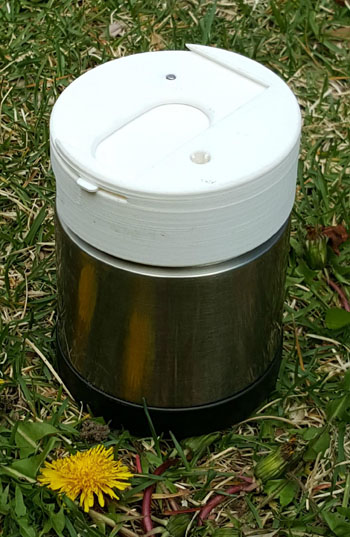Field Test for Zika Virus Combines PCR Components into a Single Low Cost Unit
By LabMedica International staff writers
Posted on 18 Jul 2016
A prototype PCR-based field test for the detection of the Zika virus (ZIKV) incorporates all required components and delivers accurate results in only about 40 minutes.Posted on 18 Jul 2016
Rapid and reliable diagnostics for ZIKV are vital because ZIKV-infected individuals display no symptoms or nonspecific symptoms similar to other viral infections. Since immunoassays lack adequate sensitivity and selectivity and are unable to identify active state of infection, molecular diagnostics are an effective means to detect ZIKV soon after infection and throughout pregnancy.

Image: The prototype of a rapid, low-cost genetic test for the Zika virus. The patient provides a saliva sample, and the appearance of a blue color in the device\'s lid indicates the presence of the virus (Photo courtesy of the University of Pennsylvania).
Investigators at the University of Pennsylvania (Philadelphia, USA) recently described a highly sensitive reverse-transcription loop-mediated, isothermal amplification (RT-LAMP) assay for rapid detection of ZIKV. The benefit of using the RT-LAMP procedure was that while it required that the sample be kept at a specific temperature, it did not demand that it be cycled through multiple precise temperature changes as in RT-PCR. On the other hand, RT-LAMP required more highly specialized DNA primers than did RT-PCR.
To deal with the primer problem, the investigators identified highly conserved regions of the Zika virus genome that were divergent from other known pathogens. They then designed appropriate primers to recognize this sequence. The investigators then engineered a low-cost, point-of-care system that consisted of a diagnostic cassette and a processor. The cassette isolated, concentrated, and purified nucleic acids from a patient's saliva sample and then carried out enzymatic amplification. The test results were indicated by the change in the color of a dye, which was inspected visually. For thermal control of the cassette, they used a chemically heated cup – adapted from military ration kits – without need for electrical power.
The investigators demonstrated the utility of this novel POC diagnostic system by detecting ZIKV in oral samples with sensitivity of five plaque-forming units (PFU) in less than 40 minutes. This low cost technology (estimated to be about two USD per test device) is particularly suitable for resource-poor settings, where centralized laboratory facilities, funds, and trained personnel are in short supply, and for use in doctors’ offices, clinics, and at home.
"Our work represents a proof of concept at this stage," said contributing author Dr. Haim Bau, professor of mechanical engineering and applied mechanics at the University of Pennsylvania. "Before the assay can be adapted for medical use, we must experiment with patients' samples and make assure that our assay and system match the performance of the gold standard and operate reproducibly and reliably. We are fortunate to have dedicated colleagues in endemic regions ready to assist us in this task."
The ZIKV field test was described in detail in the June 16, 2016, online edition of the journal Analytical Chemistry.
Related Links:
University of Pennsylvania













